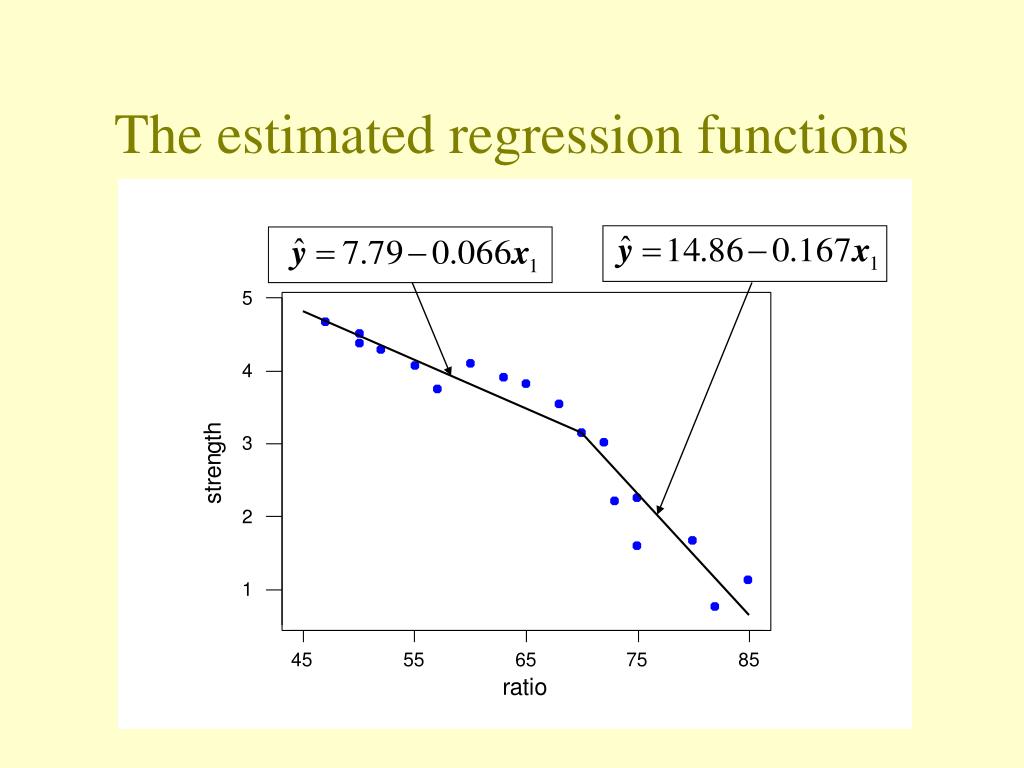

This approach does not allow you to estimate the breakpoint exactly. Although they are not very close, the fitted curves are: Numbers 0.57 and 0.825 correspond to 0.5 and 1.25 in the true DGP. With this method, one line is fit to all.
Piecewise regression code#
This code will return a vector of estimated coefficients to you: ĭue to Lasso approach, it is sparse: the model found exactly one breakpoint among 10 possible. Introduction Segmental regression is also commonly referred to as piecewise regression or segmented regression. Plt.title('fitting segmented regression') Plt.plot(x, model.predict(basis), color='k') Thresholds = np.percentile(x, np.linspace(0, 1, k+2)*100)īasis = np.hstack(, np.maximum(0, np.column_stack(*k)-thresholds)]) Y = y_expected + np.random.normal(size=x.size, scale=0.5) If you are unsatisfied with discontinuous model and want continuous seting, I would propose to look for your curve in a basis of k L-shaped curves, using Lasso for sparsity: import numpy as np That solution fits discontinuous regression. There is a blog post with a recursive implementation of piecewise regression. Estimating regression models with unknown breakpoints. Plt.plot( *SegmentedLinearReg( X, Y, initialBreakpoints ), '-r' ) The basic idea behind piecewise linear regression is that if the data follow different linear trends over different regions of the data then we should model the.

We can compare the results of these two models. Ysolution = a*ones + b*Xsolution + np.sum( Rk, axis=0 ) To investigate this, we can run two separate regressions, one for before age 14, and one for after age 14. Xsolution = np.insert( np.append( breakpoints, max(X) ), 0, min(X) ) If np.max(np.abs(newBreakpoints - breakpoints)) < dt/5: When using the package, please cite the accompanying paper. Based on Muggeo’s paper Estimating regression models with unknown break-points (2003). For fitting straight lines to data where there are one or more changes in gradient (known as breakpoints). Here is an implementation in python: import numpy as npĭef SegmentedLinearReg( X, Y, breakpoints ):īreakpoints = np.sort( np.array(breakpoints) ) Easy-to-use piecewise regression (aka segmented regression) in Python. This is the method used in the R Segmented package. In particular, the convergence or the result may depends on the first estimation of the breakpoints. "the process is iterated until possible convergence, which is not, in From the values of the jumps, the next breakpoint positions are deduced, until there are no more discontinuity (jumps). The positions of the breakpoints are iteratively estimated by performing, for each iteration, a segmented linear regression allowing jumps at the breakpoints. It works for a specified number of segments, and for a continuous function. Muggeo is relatively simple and efficient.


 0 kommentar(er)
0 kommentar(er)
